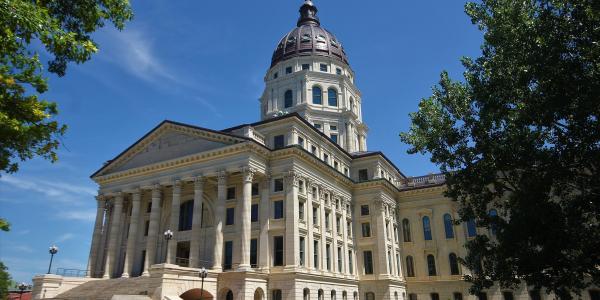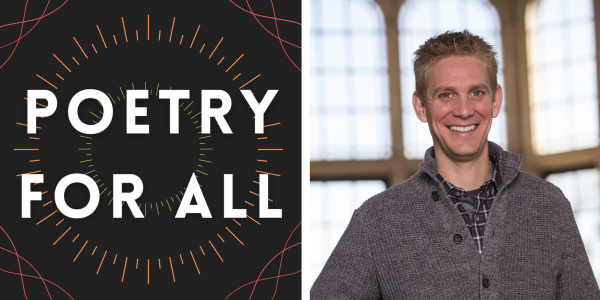In their new book "Judging Inequality," James L. Gibson and Michael J. Nelson account for 26 years of political maneuvering to influence states’ highest courts.
State supreme courts do not protect minority interests but instead reflect the will of a state’s political majority, according to a new book by James L. Gibson, the Sidney W. Souers Professor of Government, and Michael J. Nelson, PhD ’14. In Judging Inequality: State Supreme Courts and the Equality Crisis, the authors present findings from a multi-year study of state supreme court cases that show state high courts often contributing to a growing trend of inequality in the United States.

“As the U.S. Supreme Court’s decisions begin to have a more strongly pronounced conservative tilt, the state supreme courts – which have the final say on state law – will become extremely important battlegrounds for groups seeking to mitigate the rising inequality in the U.S. and regarding important social issues,” said Nelson, who now serves as the Jeffrey L. Hyde and Sharon D. Hyde and Political Science Board of Visitors Early Career Professor in Political Science at Penn State.
“As more and more policies become state-based, state supreme courts will have an extraordinarily important role in deciding whether or not their state, through its constitution, will protect rights that the U.S. Supreme Court says are not covered by the U.S. Constitution,” Nelson added.
Schools in the U.S. commonly teach that the judiciary is an institution that protects the rights of minorities – those holding less legislative and executive sway in government. The nation’s courts are said to be able to maintain this role because of their purported independence. Yet, Gibson and Nelson find that this assumption does not reflect the political reality of how state supreme courts are seated and subsequently decide cases.
“We ought not to think of state supreme courts as a bulwark against majority tyranny,” said Gibson. “State supreme courts tend to be majoritarian institutions that do not serve as a check on governments, as true minoritarian institutions might, but instead are more often a part of the state government team.”
Governors have long known that their states’ highest courts exert a powerful influence on public policy. These institutions are able to affirm or reverse an administration’s major policy initiatives. Governors seek to influence court composition as a way of preserving their policy legacy, much as presidents do with the U.S. Supreme Court.
"We ought not to think of state supreme courts as a bulwark against majority tyranny."
Around 90% of judges in the U.S. have some form of electoral accountability, a fact often cited as evidence that the courts are held responsible for their rulings. Yet governors manipulate those elections to influence the composition of the bench. Through strategic resignation, party leaders encourage older judges to retire so that they can be replaced by a governor of their own party. Those replacement justices then run in the next election as incumbents, granting them a great advantage over their opponents. Gibson noted that nearly all judges on the Georgia and Minnesota Supreme Courts – both courts that nominally use elections to pick their judges – were initially appointed and subsequently elected through this process.
State supreme courts have addressed inequality with great variation in the last 26 years, due in large part to the way that political interventions have shaped the courts. In 1990, almost all judges on the Alabama Supreme Court were Democrats, while today the court is composed almost entirely of Republicans.
These political leanings matter for equality. “The Texas Supreme Court has decided 28% of its cases in those 26 years in favor of greater equality; the Arizona Supreme Court 72%,” Gibson said. “It’s almost the case that the variability couldn’t be greater.”
From student to colleague
The findings in Judging Inequality resulted from a long-term research effort in which Gibson and Nelson compiled a first-of-its-kind database of cases related to inequality, funded by the National Science Foundation and the Russell Sage Foundation. While they could reference extant databases for specific topics, like court cases related to the equal funding of public education, no comprehensive database existed for inequality litigation at the state level. With a team of about 50 law students, they sifted through 14,000 state supreme court cases to compile a database of 6,000 cases relevant to issues of inequality decided between 1990 and 2015.
The seeds of this project were planted while Nelson was still pursuing his doctorate at Washington University, where he studied with both Gibson and Chancellor Andrew Martin during the chancellor’s first stint at WashU as a political science faculty member. Nelson remembers the department as a collegial place, with open-door policies that allowed graduate students to connect with faculty and, as in his case, begin productive and long-lasting research partnerships.
“It has been a once-in-a-lifetime opportunity,” Nelson said. “Jim is a world-renowned political scientist, and being able to write with him has been a chance to have a front-row seat into what it means to be a successful academic. I’ve learned so much from being able to work alongside Jim – from how to write an academic article, to how to respond to peer review critiques, to how to write a grant proposal, and how to be a participant in the academic conversation. I’ll forever be thankful for his patience and good humor as we worked on this project – one that started as a graduate student in Seigle Hall and ended after I was awarded tenure myself !”
For Nelson, the project has inspired more questions about electoral competition in state courts, something he will continue to study. In the coming months and years, these courts will be in the public eye as they hear cases about voter rights, access to abortion, and mask and vaccine mandates in schools. Indeed, Gibson noted, it is even possible that the state supreme courts will wind up deciding the outcome of the next presidential election.
“More research on these powerful, ‘below-the-radar’ institutions is essential. We would welcome greater public transparency and hence accountability like we have with the U.S. Supreme Court,” Gibson said. “Because they are such important policymakers, we want to shine a bright light on these justices and courts.”
Browse more books on the digital Arts & Sciences faculty bookshelf, including the below titles.






